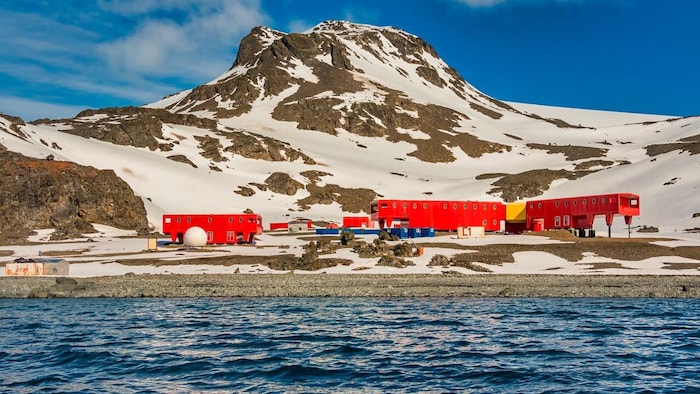Open in full screen mode The observatory is located at a depth of 23 m in the Southern Ocean, near the Spanish Antarctic base Juan Carlos 1, in the South Shetlands archipelago. (Archive photo) Radio-Canada Voice synthesis, based on artificial intelligence, makes it possible to generate spoken text from a written text. Ocean Networks Canada, from the University of Victoria, and the Spanish Higher Council for Scientific Research, designed an underwater observatory and submerged it in the sea north of the Antarctic Peninsula. It provides more data on the Southern Ocean. This small observatory, which can fit in the trunk of a vehicle medium size, already broadcasts data accessible to all, such as temperature or oxygen concentration. They are essential to better understand the impact of climate change in the waters surrounding Antarctica. Kate Moran runs Ocean Networks Canada. She explains that before the station was installed, data on Antarctica came mainly from satellites and floating research equipment, or from people navigating that part of the globe. The Canadian-built equipment now sits at a depth of around 23m near a Spanish research station on the island of Livingston in the South Shetlands archipelago. It should remain there for several years. Loading ELSE ON INFO: Tensions in the Taiwan Strait: moderation, but for how long? Kohen Bauer, senior scientist at Ocean Networks Canada, explains that the Southern Ocean, with its current that circles the pole, plays a critical role in water circulation in the region. Having long-term data from a stationary location will help researchers spot changes. The observatory also measures water conductivity, depth and clarity. This data is sent approximately every 30 minutes to Ocean Networks Canada. We are trying to establish a continuous time series of these ocean variables. We can then begin to interpret this data through the prism of key questions, both locally and regionally, and even potentially globally, Kohen Bauer hopes. Ultimately, it's about connecting these types of observations to larger issues, like those related to climate change. The data could reveal changes in sea ice, the formation and melting of glaciers in particular. According to Kate Moran, understanding how the ocean absorbs carbon dioxide (CO2) emitted by greenhouse gases can help predict climate trends. Colder oceans, like the Arctic and Southern Ocean, can absorb more CO than elsewhere, she explains. Understanding how it happens today and how we can predict it helps us better understand the natural carbon system and predict the future, whatever happens on the plan emissions, explains the scientist. Last year, after a symposium on the Southern Ocean, 300 scientists from 25 countries issued a statement calling for more data to be collected. We can read that the ocean has experienced historically low sea ice levels and record temperatures. We also learn that penguin populations have undergone spectacular changes. The lack of observations in the Southern Ocean compromises our ability to detect and assess the consequences of changes, the statement said. It is therefore more urgent than ever to have a sustainable and coordinated observation system of the Southern Ocean in order to understand current conditions, inform predictions about future states and support policies and regulations in the interest of society. With information fromThe Canadian Press< /p>
Tensions in the Taiwan Strait: moderation, but for how long?
An observatory immersed in the Southern Ocean to better understand climate change

